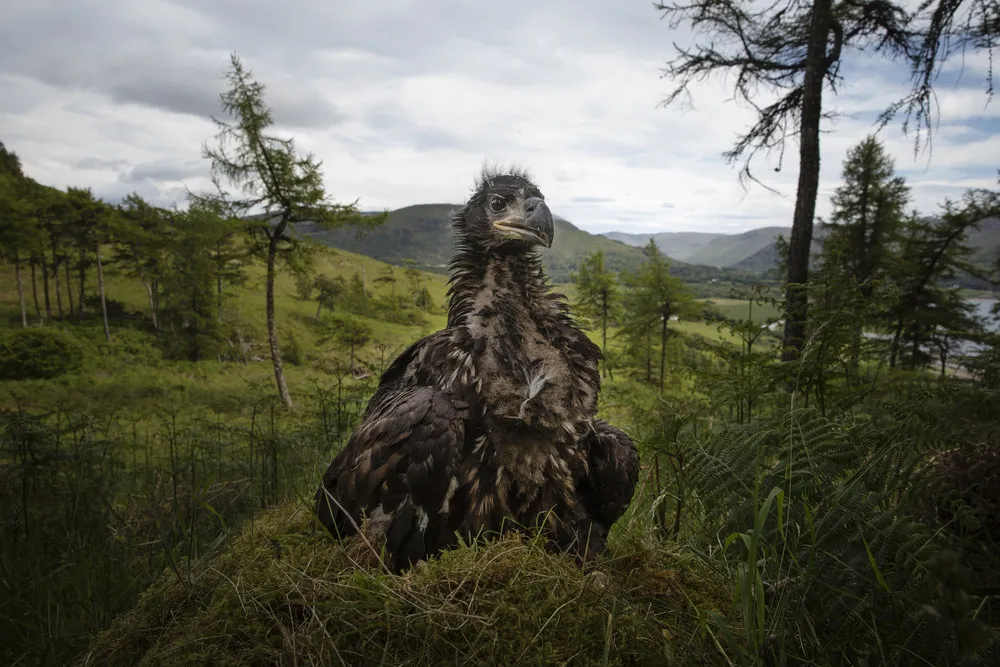|
A young white-tailed eagle sits on the ground to be ringed and measured at a remote nest site on the Isle of Mull on June 29, 2015 in Scotland. When possible birds are ringed in the nest to minimize disruption, but when that is infeasible they are lowered to the ground so they can be safely handled. The tagging effort is part of an ongoing survey by the Royal Society for the Protection of Birds (RSPB), a British conservation charity, and aims to record the population of breeding pairs of white-tailed eagles across Scotland. There are currently around 22 breeding pairs of white-tailed eagles on the Isle of Mull, with the first successful breeding pair occurring in 1985. The eagles are the largest in the UK and the fourth-largest in the world, with up to an eight-foot wingspan, and are more closely related to Old World vultures than their island neighbors, Golden Eagles. They were hunted to extinction in the UK in the early 19th century, with the last bird been shot in the Hebrides in 1918. Scotland is home to around 130 breeding pairs, whose presence supports a tourist economy of around £5m GBP in the Isle of Mull and £2.4m GBP for the Isle of Skye, farther up Scotlands Western Coast. The close monitoring of this apex predator is part of a re-introduction programme run by the Roy Dennis Wildlife Foundation in partnership with the UK Forestry England. The rewilding scheme hopes to release around 60 birds on the Isle of Wight in the summer. The project has courted controversy from some members of National Farmers Union (NFU) who worry that the birds may take lambs, but the programme's proponents argue that any impact on livestock is likely to be minimal due to the abundance of other food sources. (Photo by Dan Kitwood/Getty Images)
|

